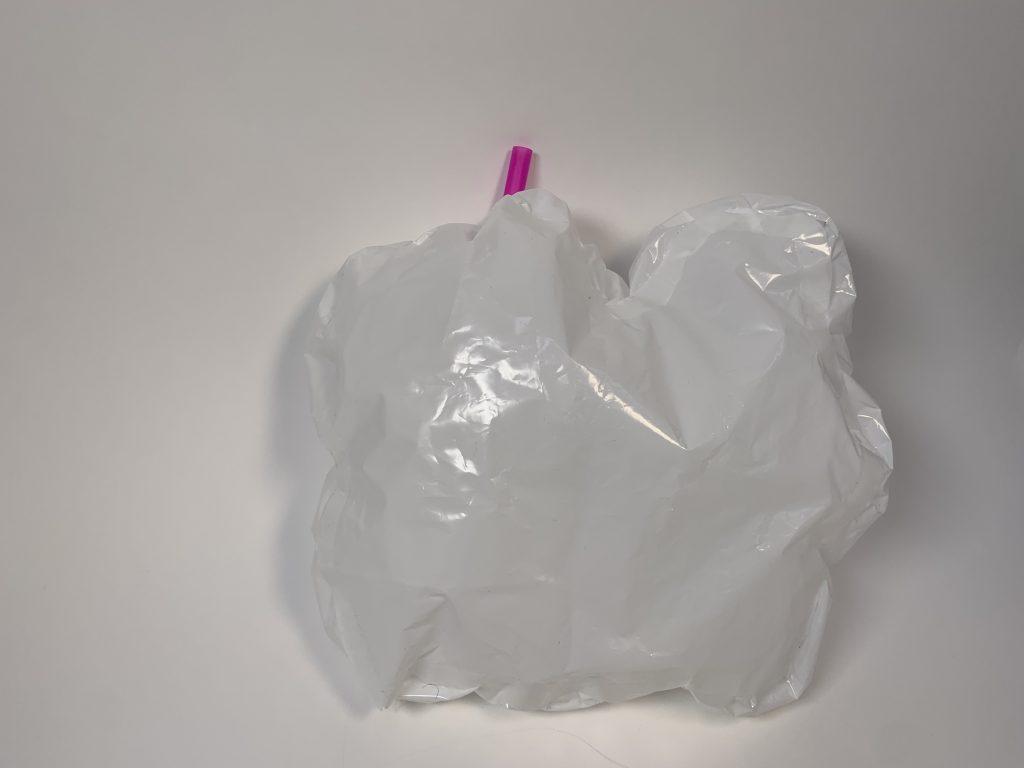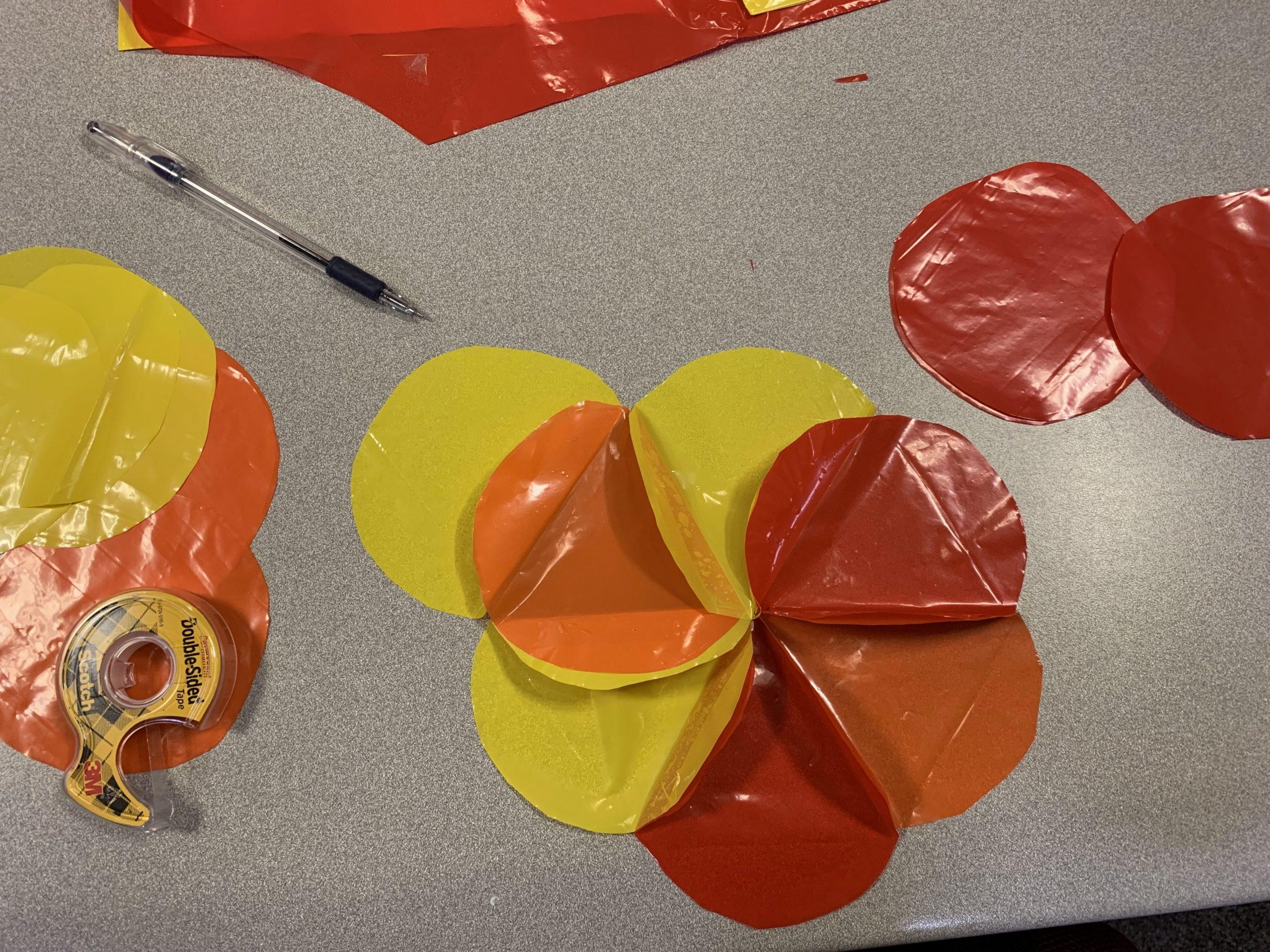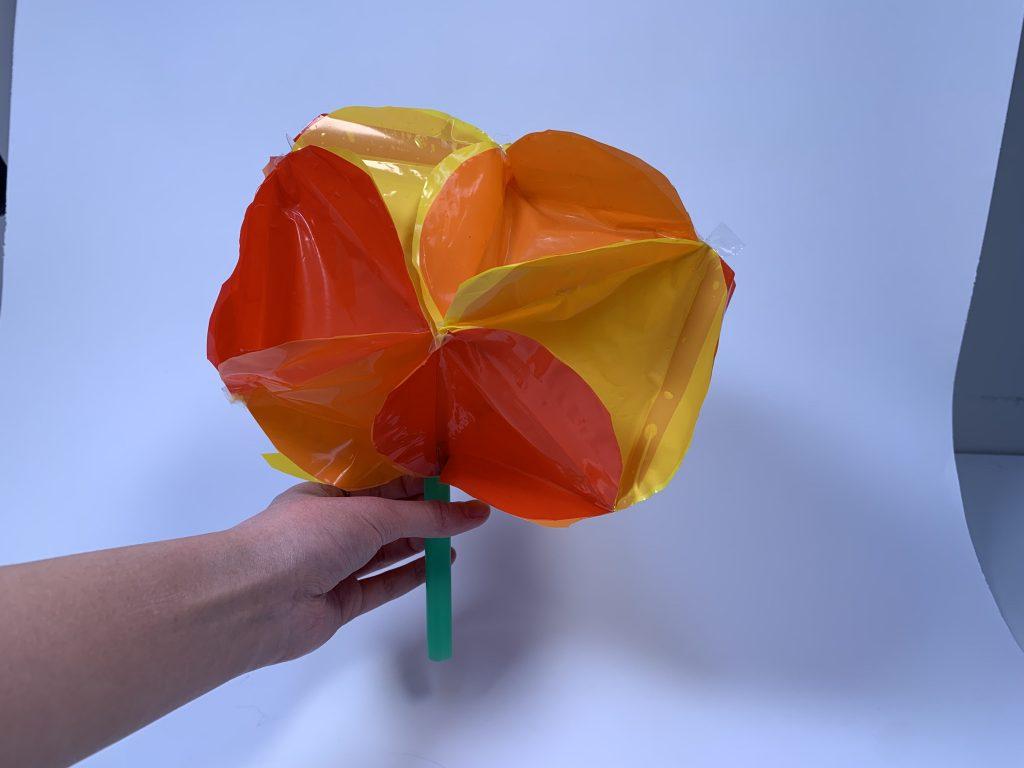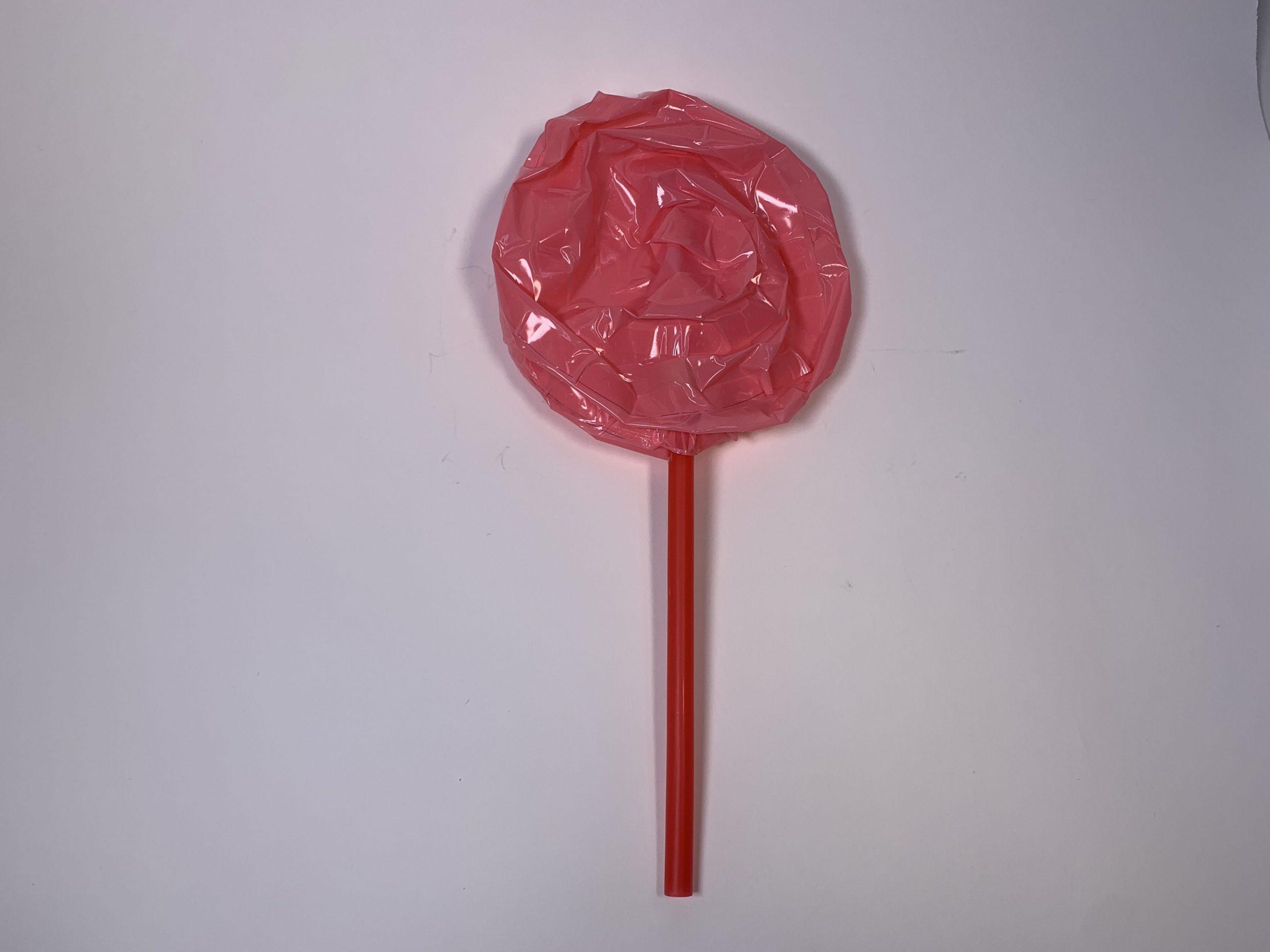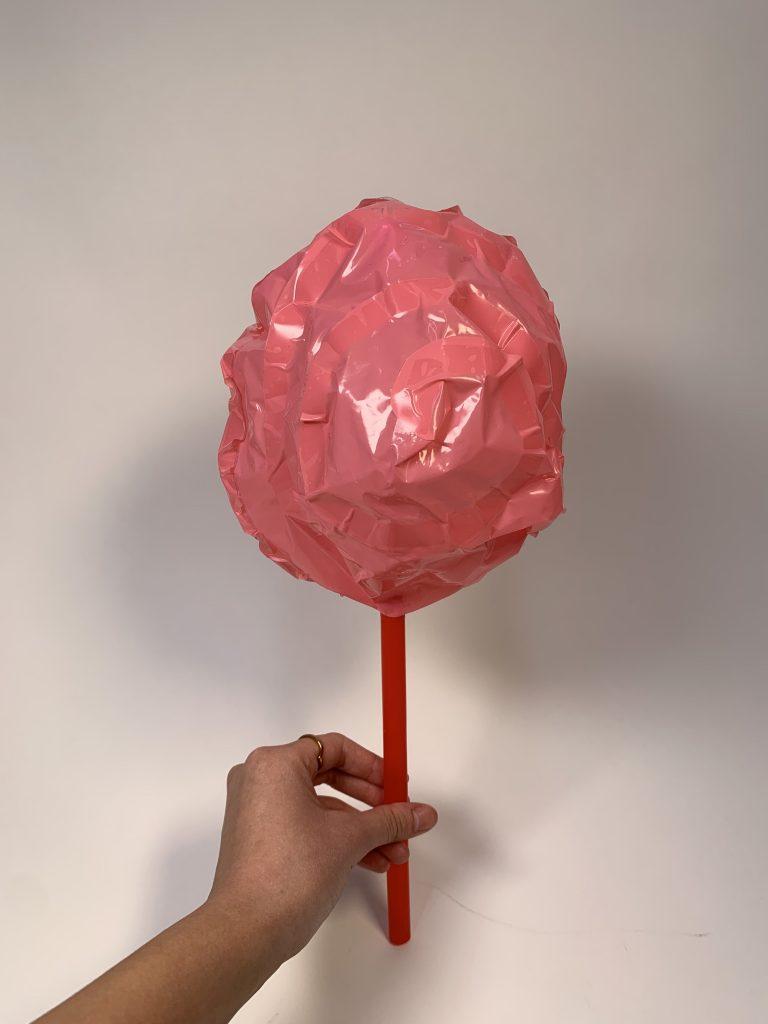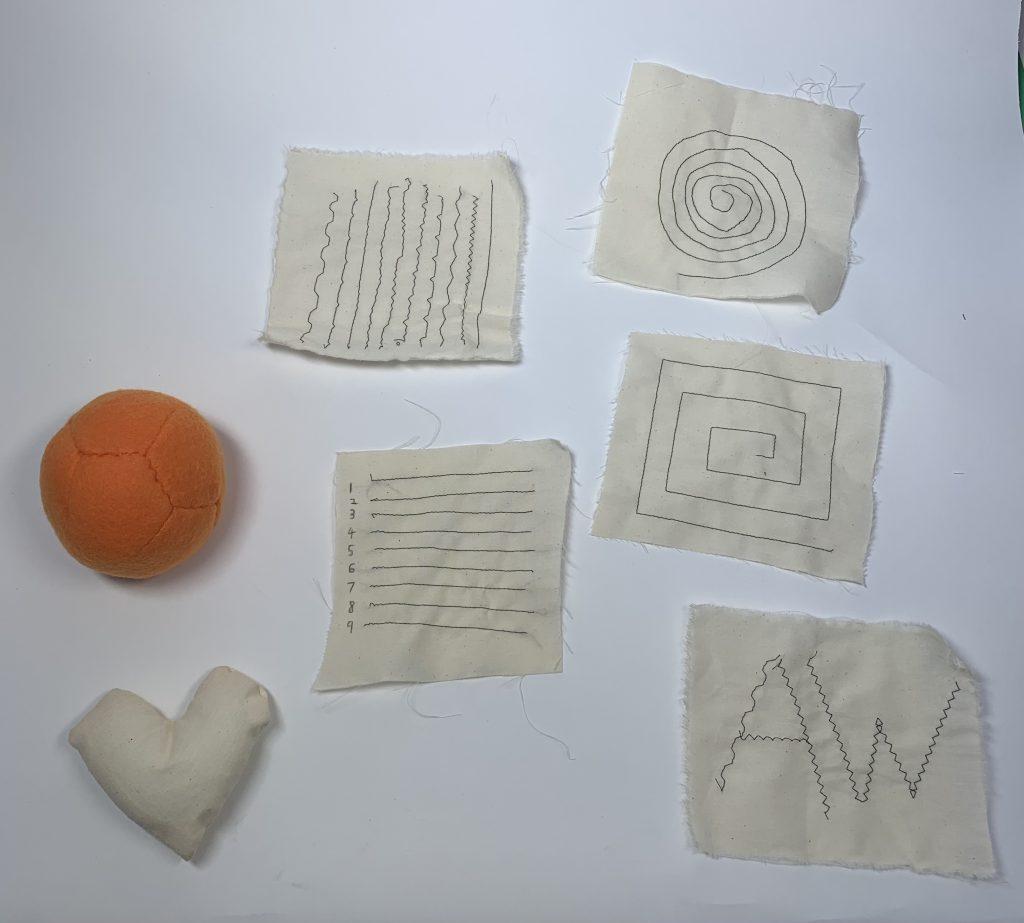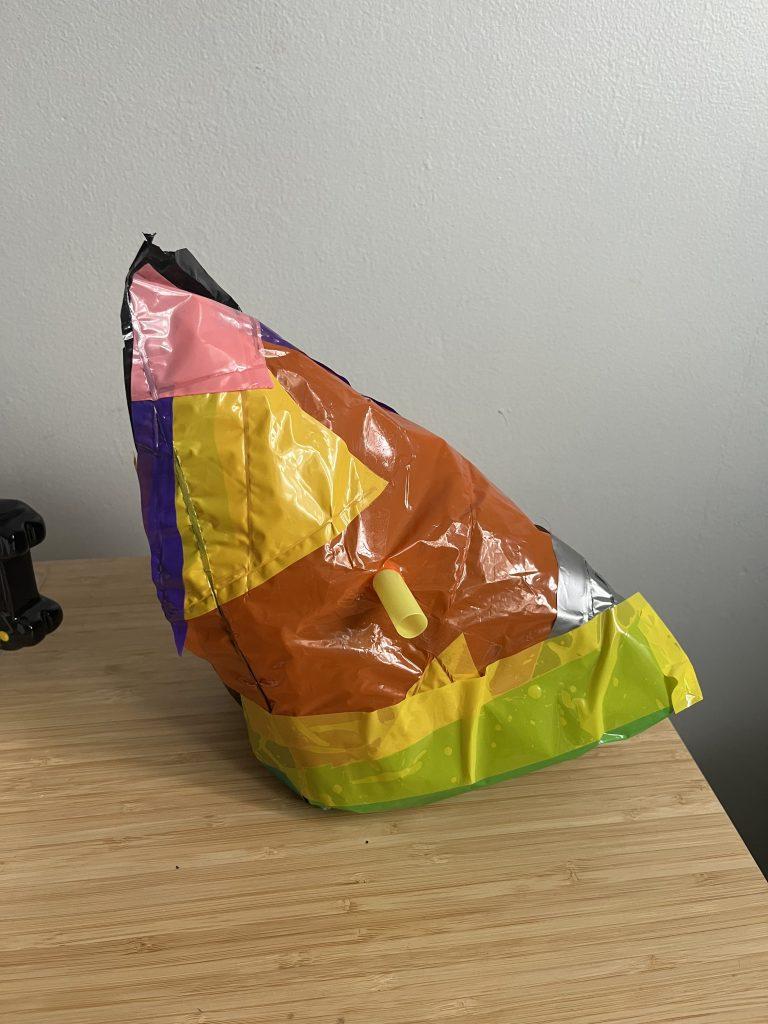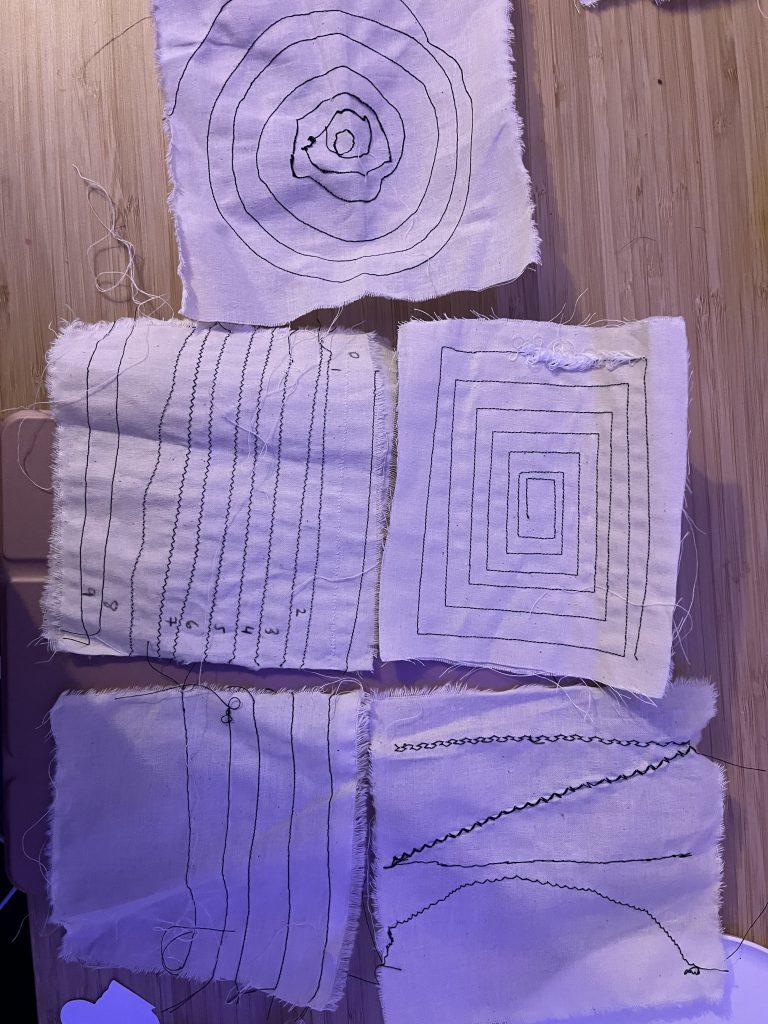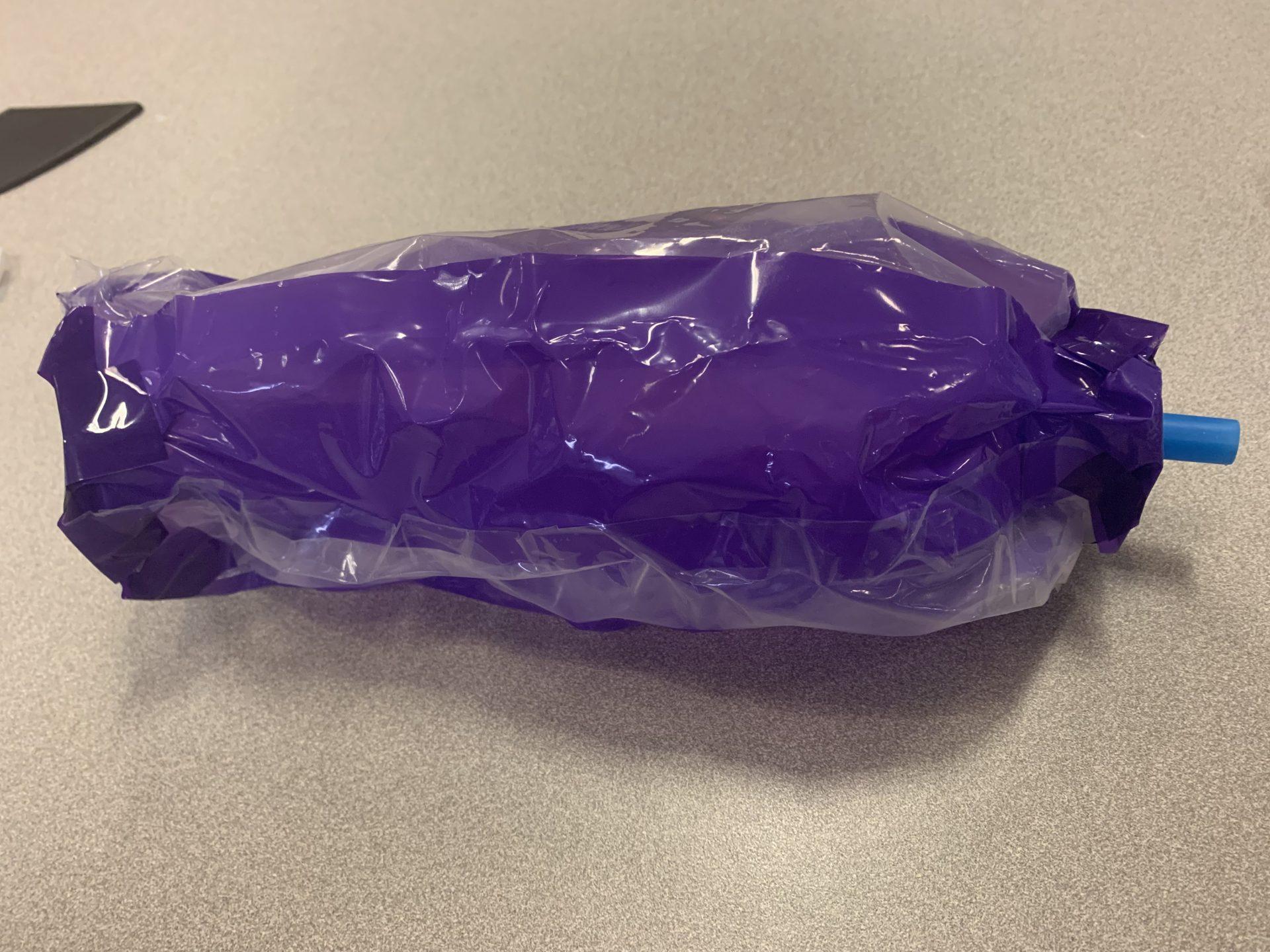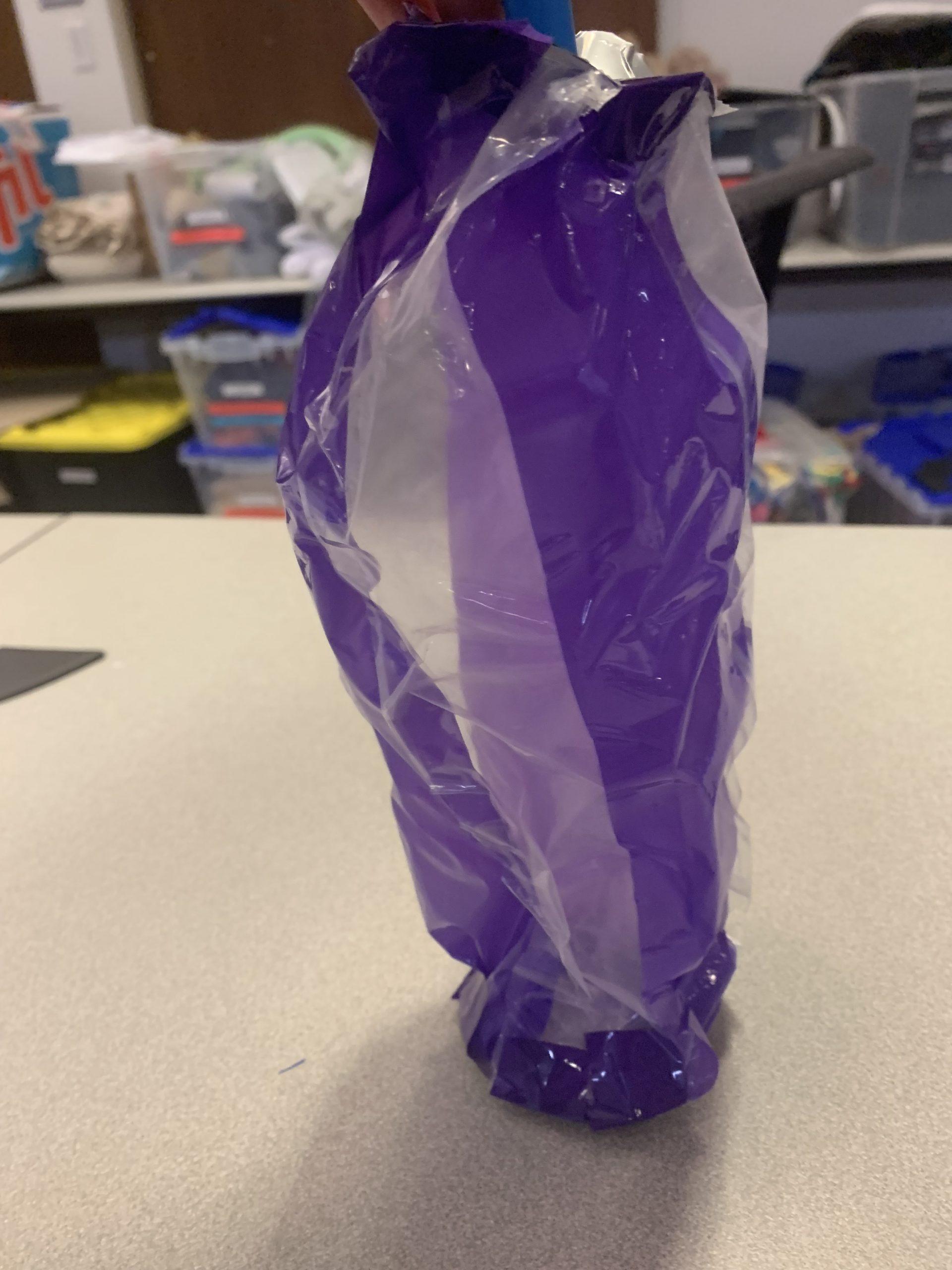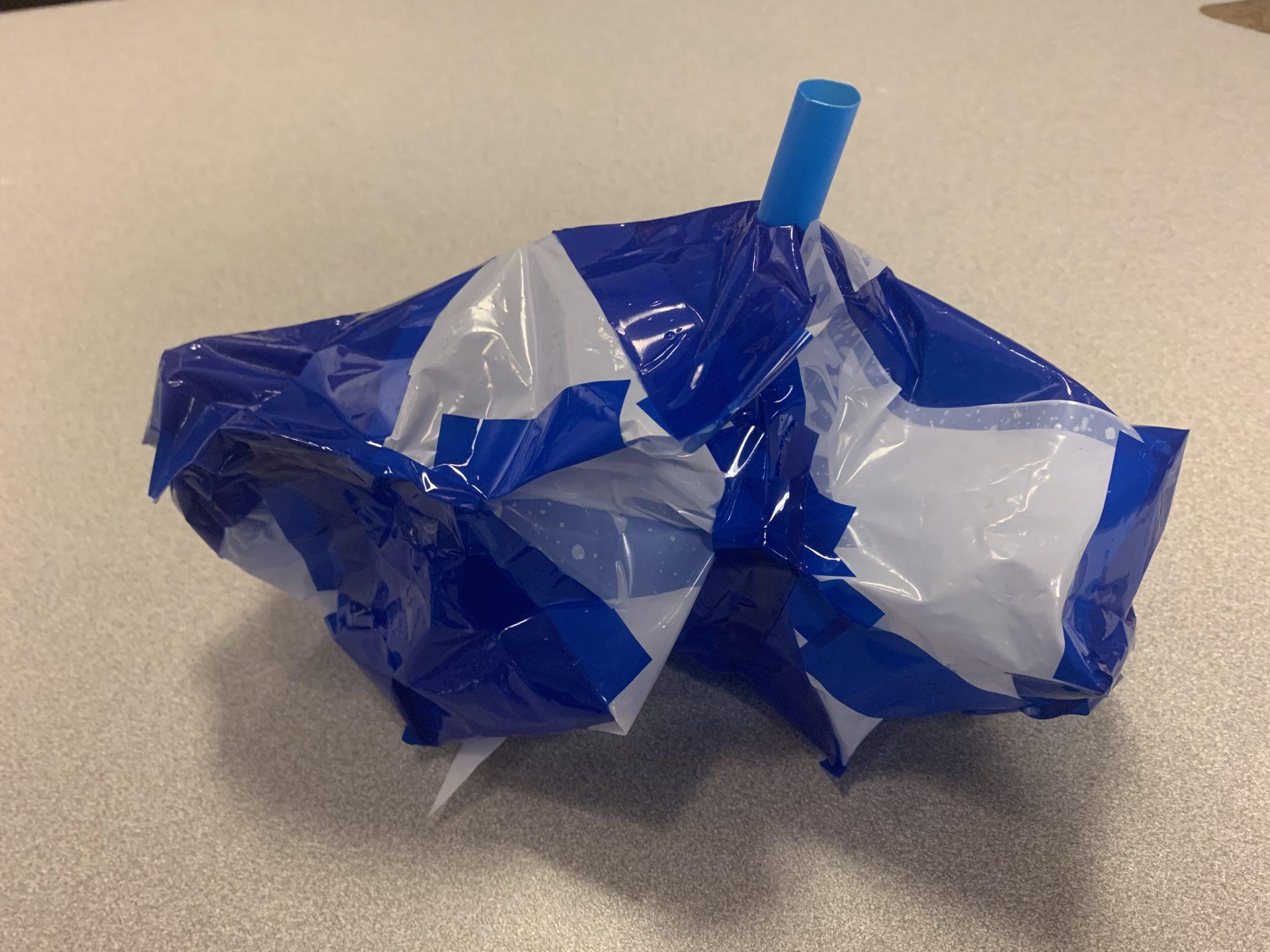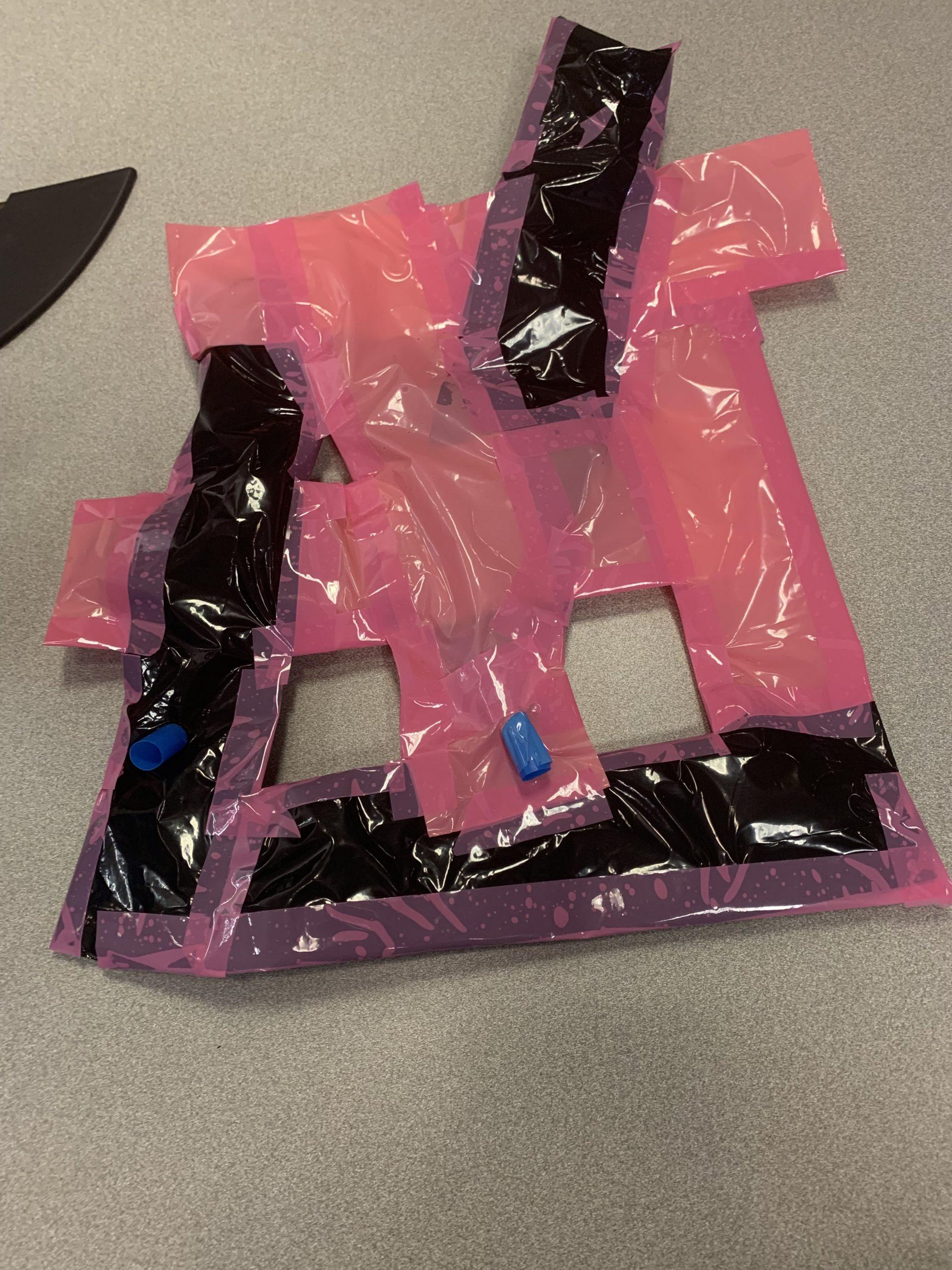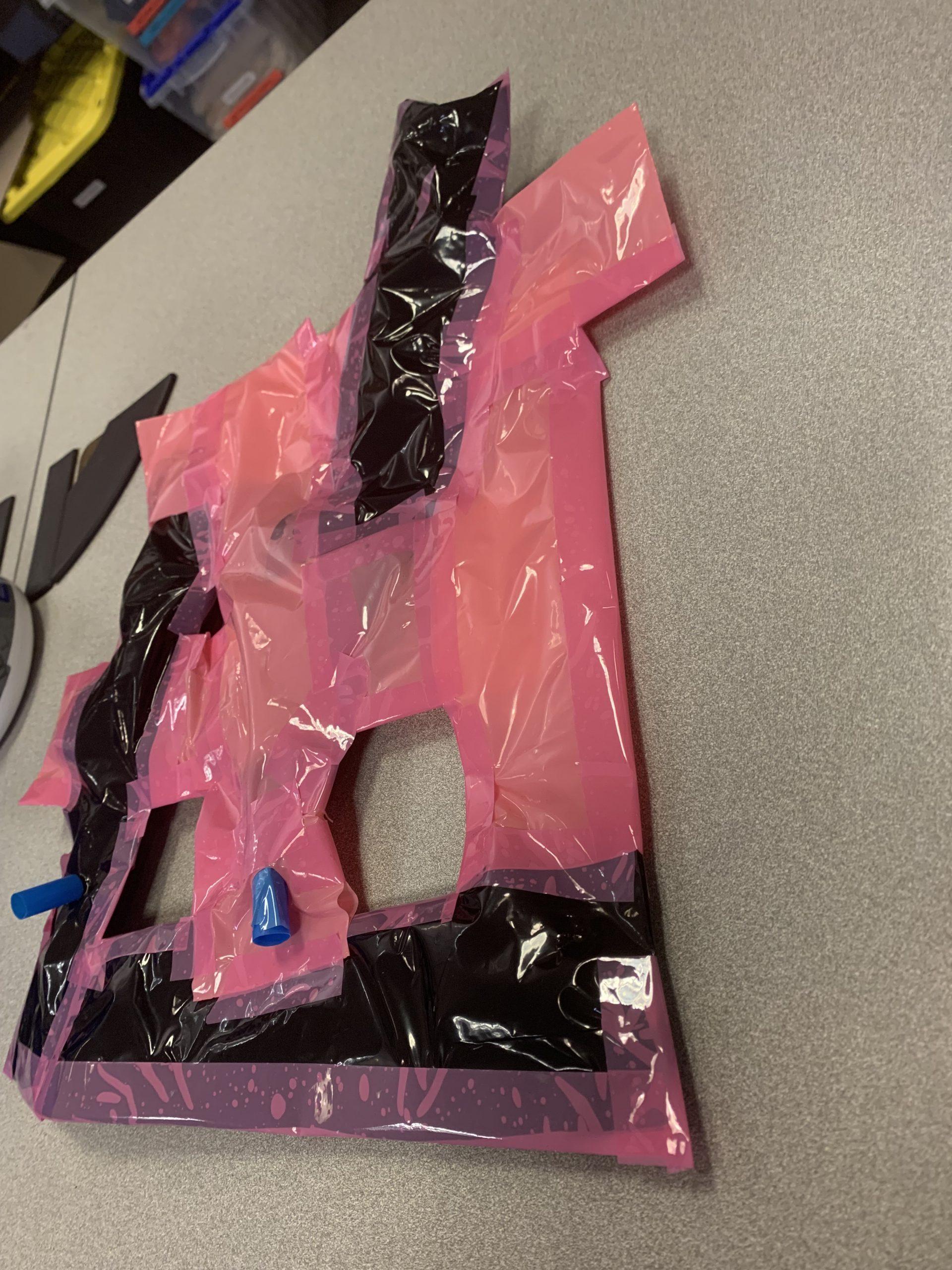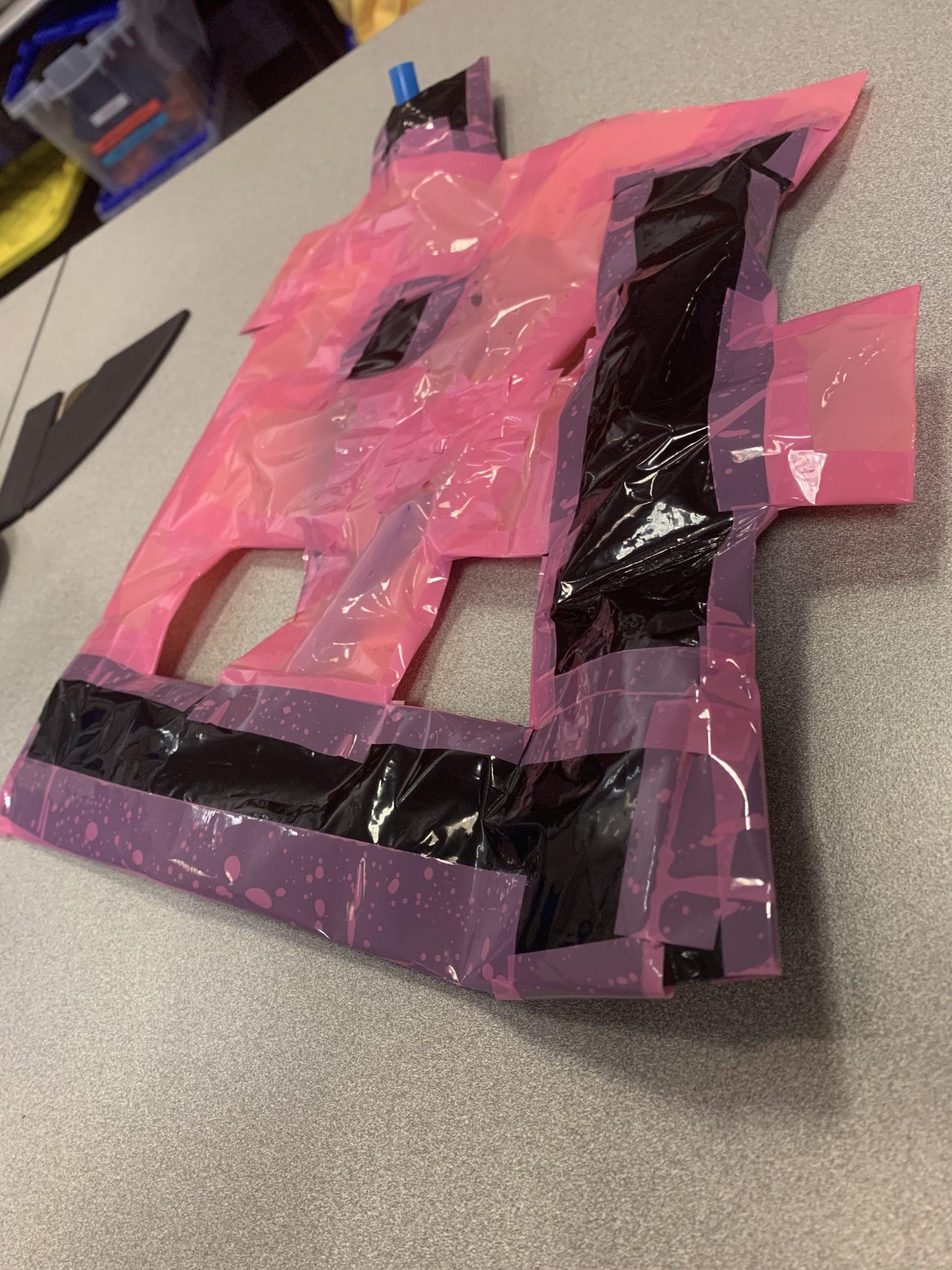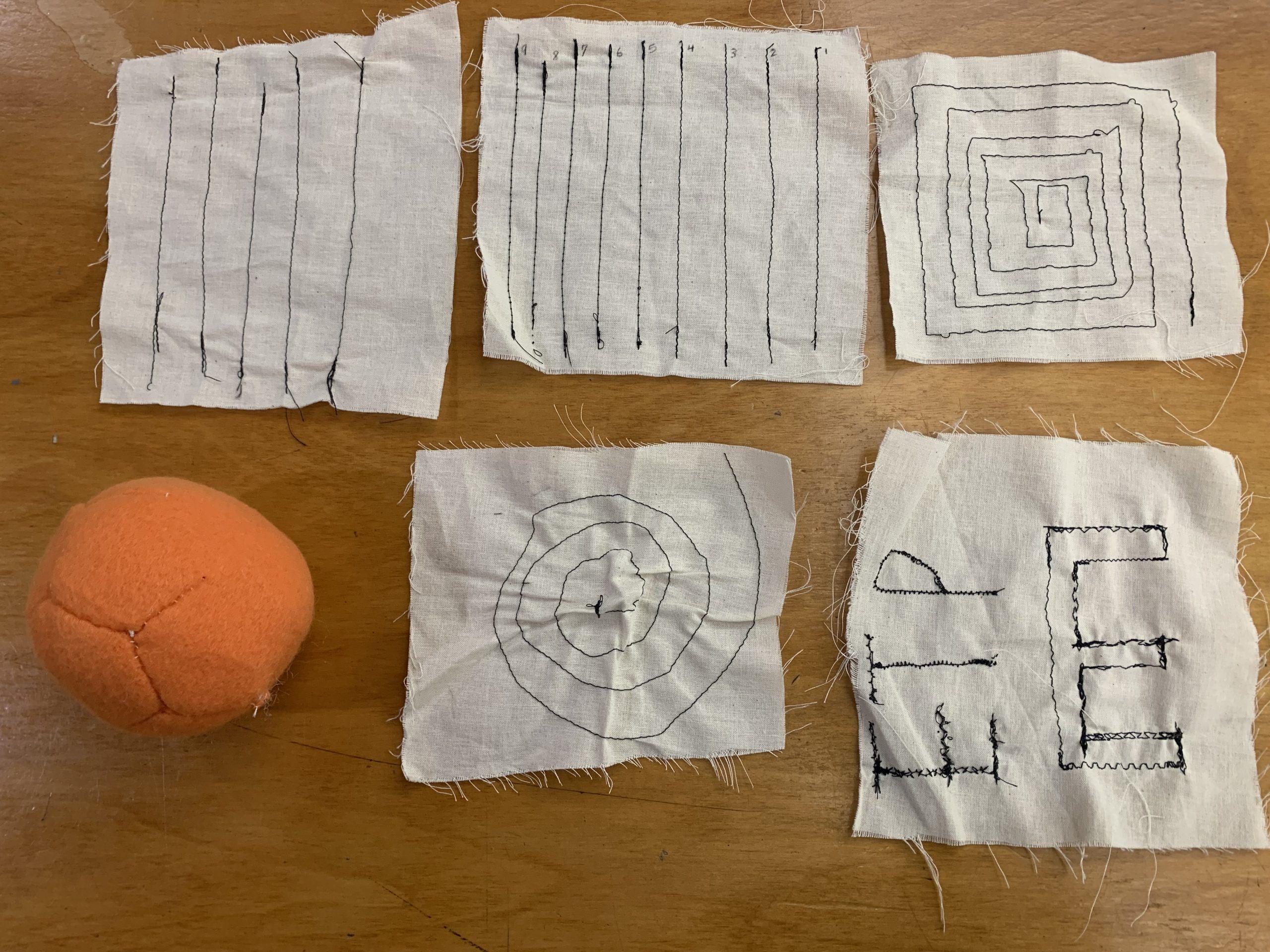For our first assignment, I started off with exploring different methods of attaching the pieces of plastic together. In my first inflatable, I used scraps of plastic from previously cut bags and pieced them together. I did not have a plan going into this first attempt and mostly just trimmed existing scraps so that their edges fit together. My resulting inflatable reflected this freeform approach; it did not really have a structured shape and had a patchwork pattern.
I used the heat gun, double sided tape, and colored tape. The double sided tape afforded me more flexibility in piecing together smaller scraps, but I realized that I often inadvertently created holes where the plastic was curved. For me, the heat gun was the most reliable in creating closed seams.
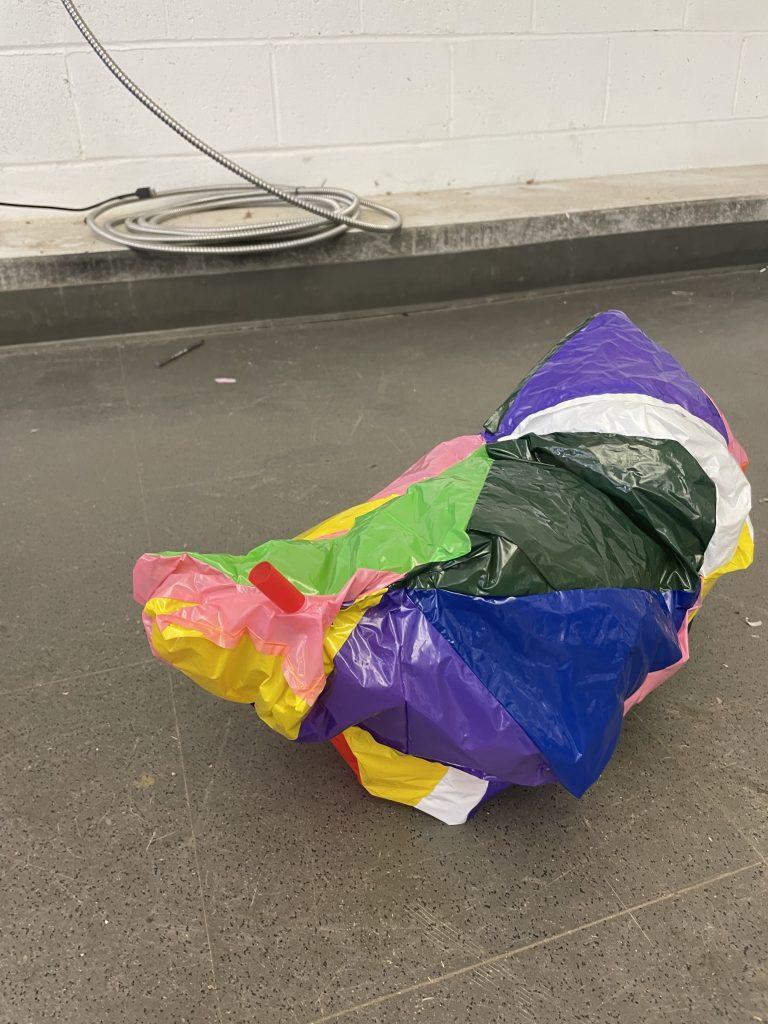
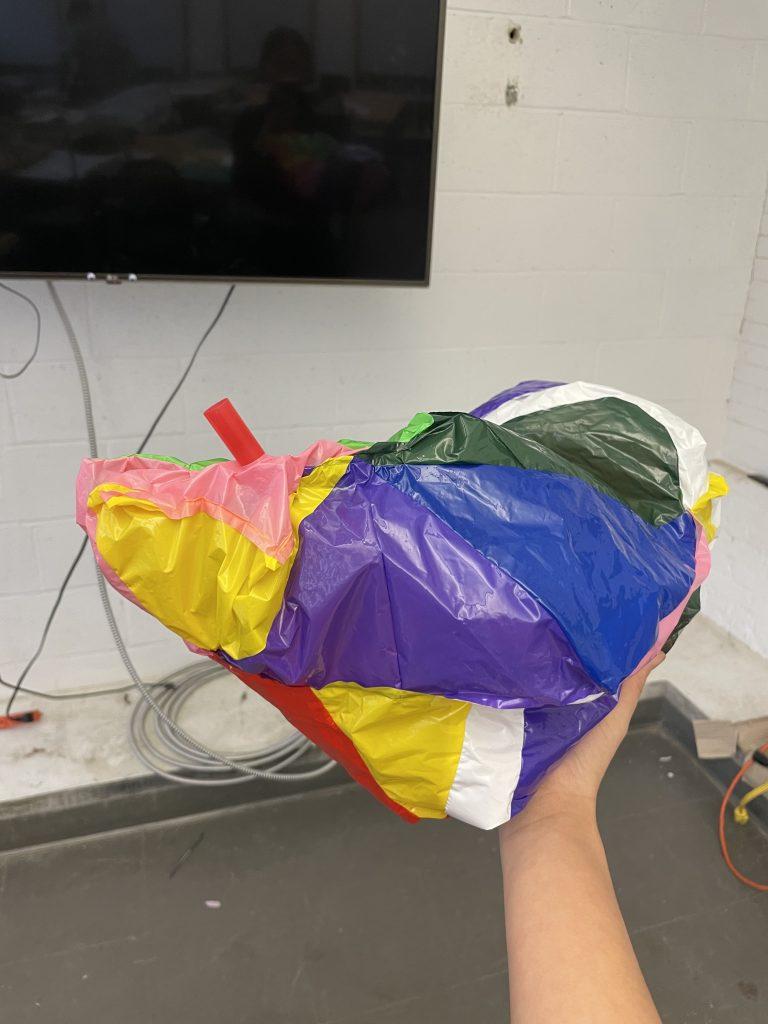
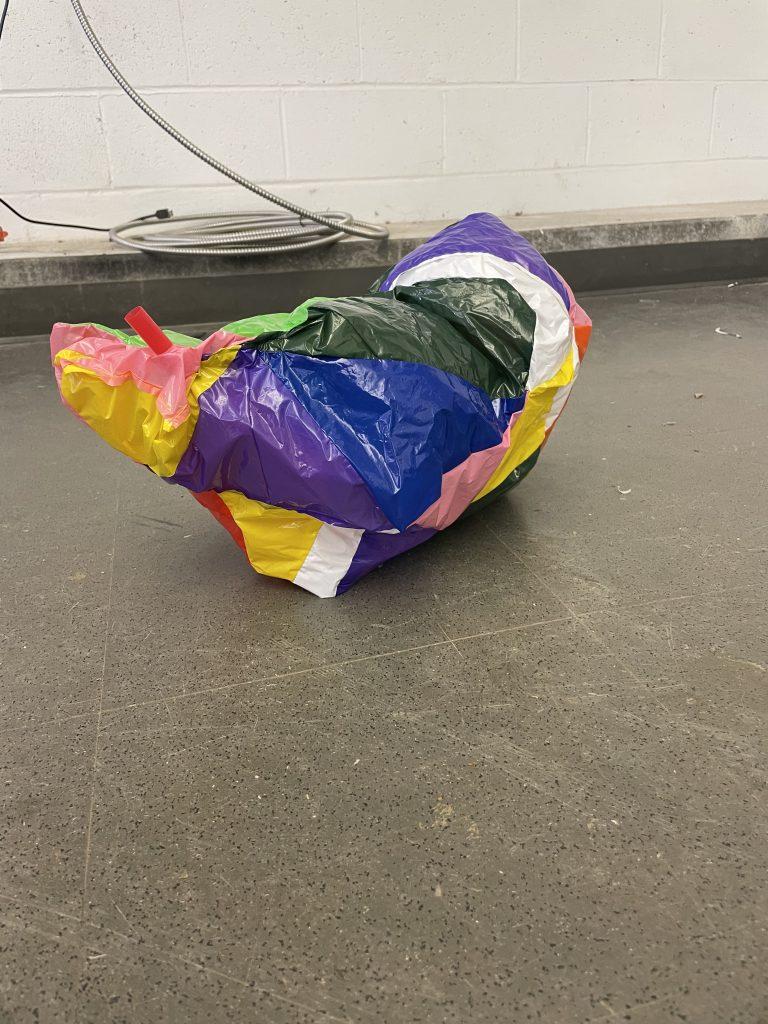
For my next inflatable, I wanted to create something that was was more intentional in form. I struggled with planning for how my first inflatable was going to “close” at the end, and so I took a more modular approach in sealing together the plastic. I started by creating a cube, leaving the last side unsealed. I created six of the unsealed cubes, and then I joined them all together on their unfinished edges. Making each part separately made this inflatable a lot less intimidating to put together. Since each part was still the same shape, I think the resulting inflatable was still cohesive in structure. I used the heat gun for each section which made the inflatable relatively secure when blown up.
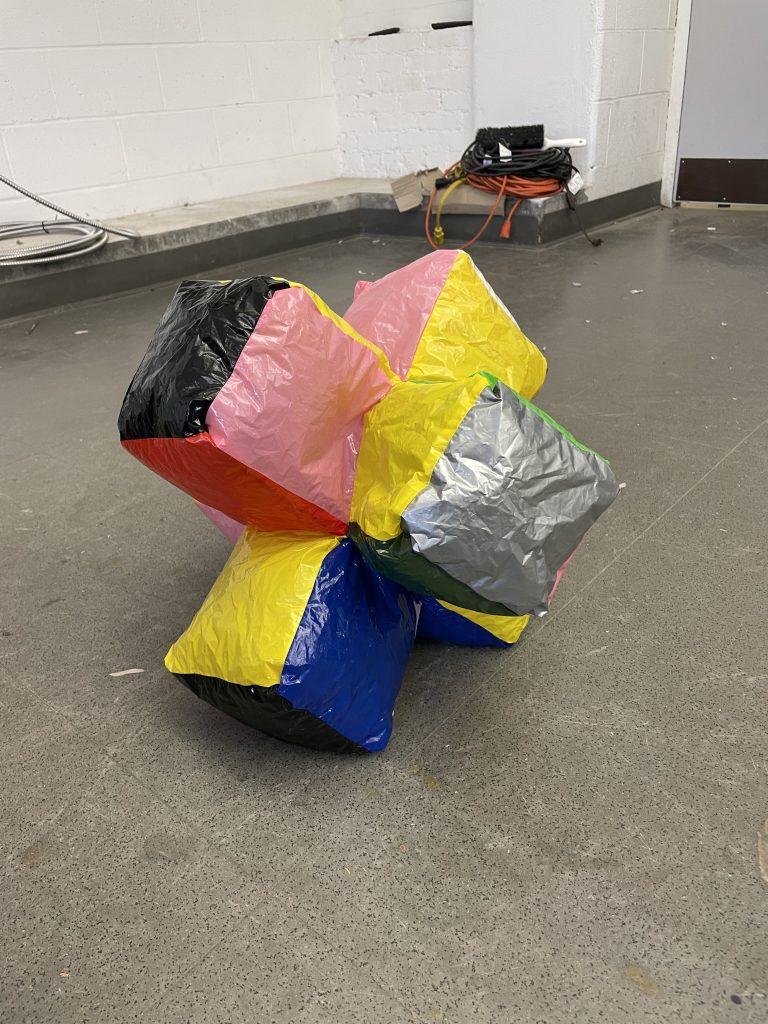

For my last inflatable, I wanted to attempt creating a circular object. I started by creating elongated oval strips and attaching them to a circle. I used double sided tape to secure each long length edge together, but the curved side made it difficult to attach edges without creating holes. Since my second inflatable had been created square shapes and the dominant form of this shape was circular, I wanted to attach a “stand” to my last inflatable with a pyramid shape. However, I miscalculated the edges needed, and so the “stand” portion of this object inflated to be more of a pillow shape rather than triangular.
My last inflatable had a round “top” portion that cinched in the middle and expanded back out.
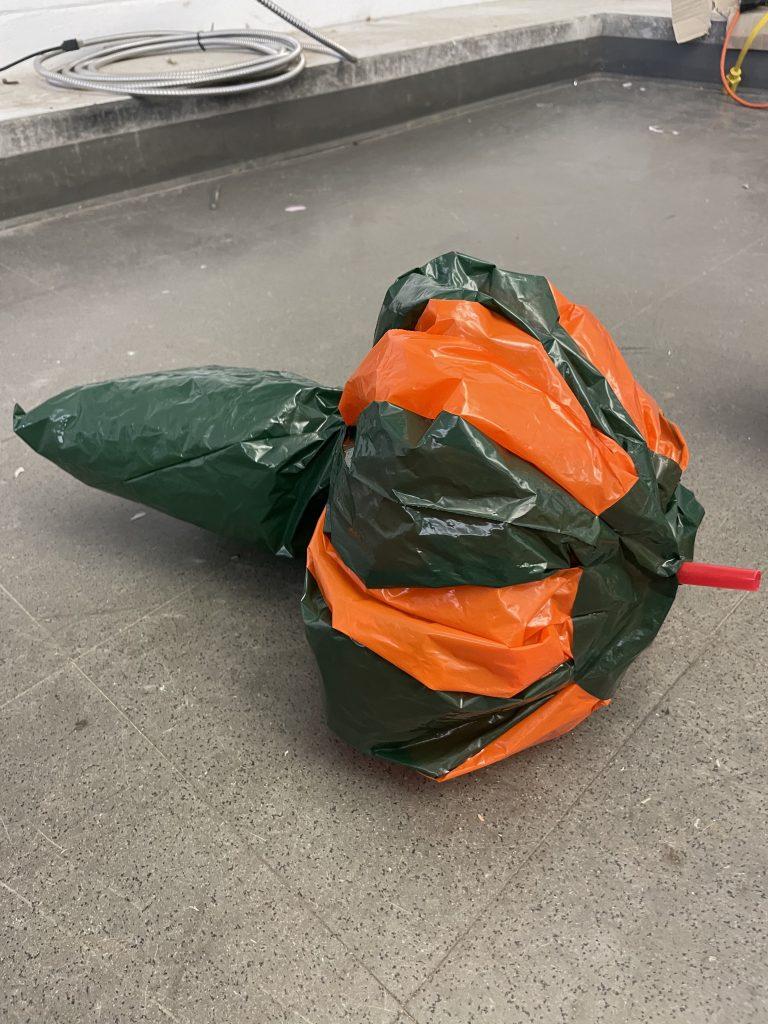
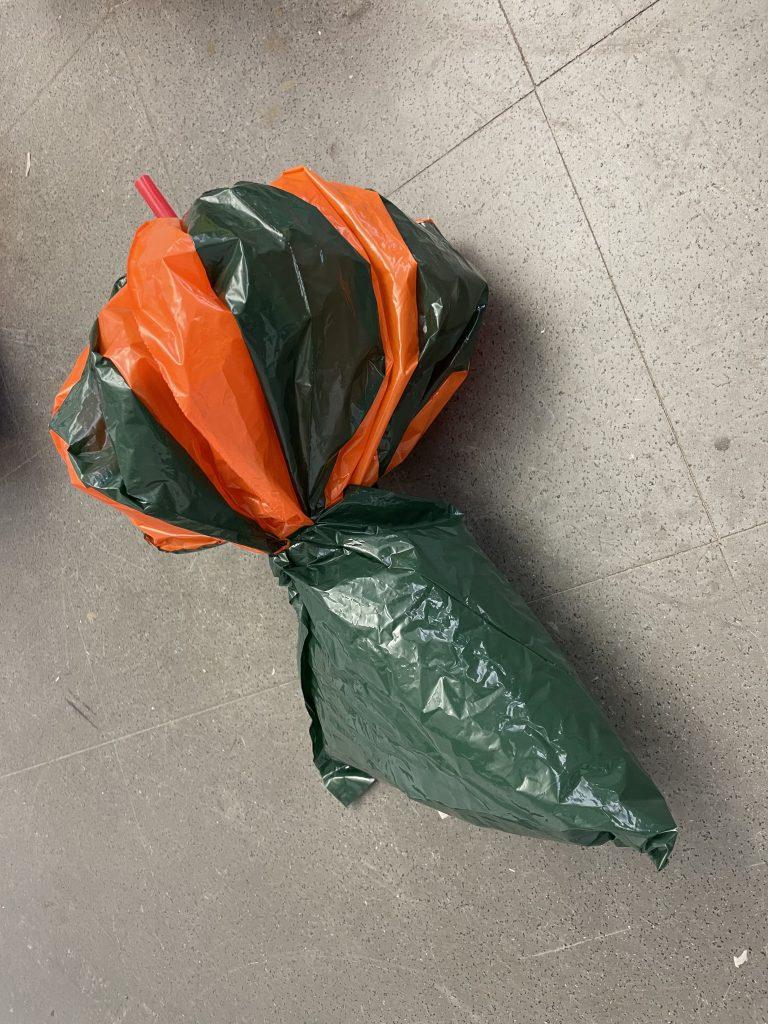
Sewing samples and ball:




